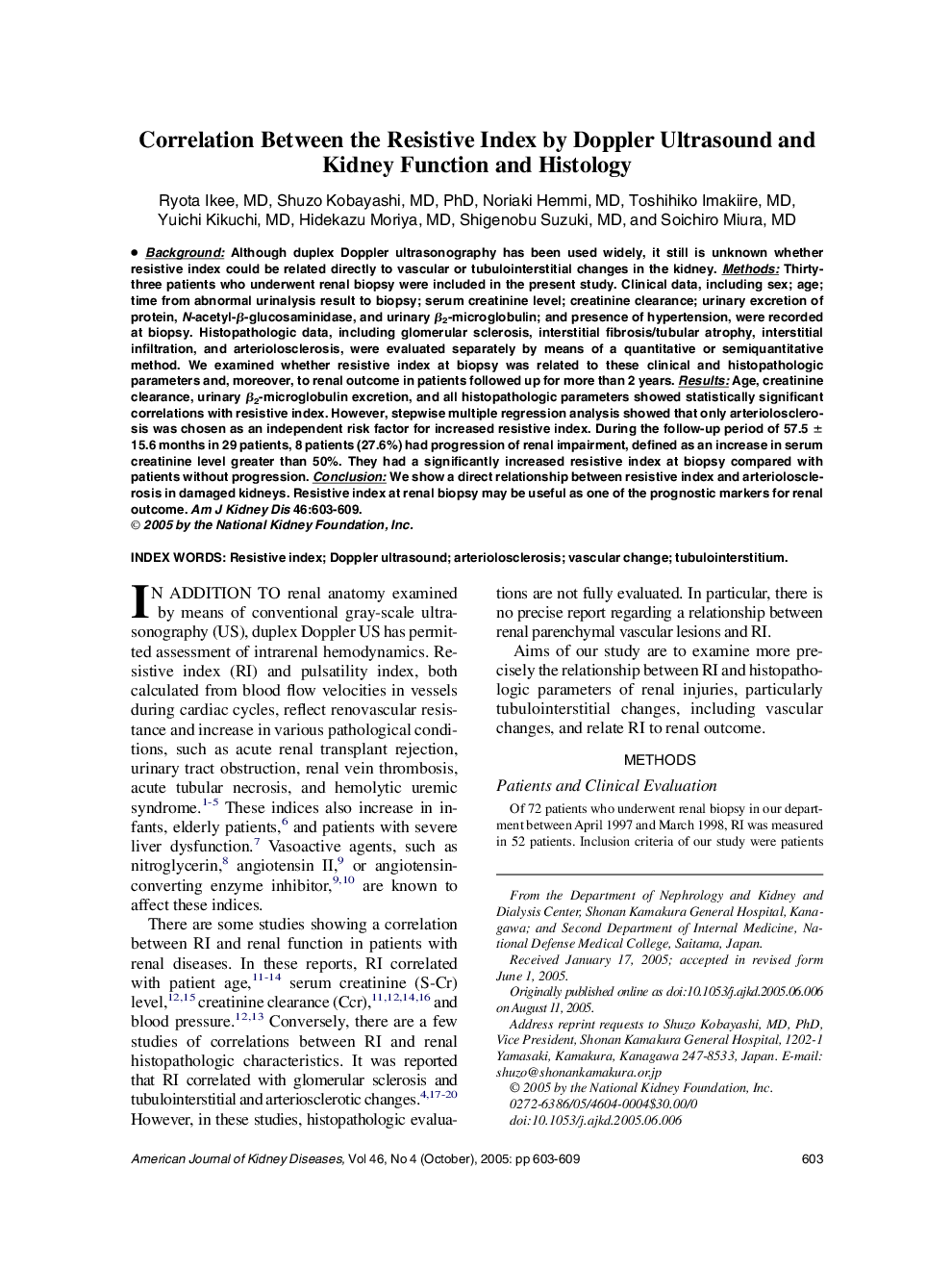| Article ID | Journal | Published Year | Pages | File Type |
|---|---|---|---|---|
| 10047371 | American Journal of Kidney Diseases | 2005 | 7 Pages |
Abstract
Background: Although duplex Doppler ultrasonography has been used widely, it still is unknown whether resistive index could be related directly to vascular or tubulointerstitial changes in the kidney. Methods: Thirty-three patients who underwent renal biopsy were included in the present study. Clinical data, including sex; age; time from abnormal urinalysis result to biopsy; serum creatinine level; creatinine clearance; urinary excretion of protein, N-acetyl-β-glucosaminidase, and urinary β2-microglobulin; and presence of hypertension, were recorded at biopsy. Histopathologic data, including glomerular sclerosis, interstitial fibrosis/tubular atrophy, interstitial infiltration, and arteriolosclerosis, were evaluated separately by means of a quantitative or semiquantitative method. We examined whether resistive index at biopsy was related to these clinical and histopathologic parameters and, moreover, to renal outcome in patients followed up for more than 2 years. Results: Age, creatinine clearance, urinary β2-microglobulin excretion, and all histopathologic parameters showed statistically significant correlations with resistive index. However, stepwise multiple regression analysis showed that only arteriolosclerosis was chosen as an independent risk factor for increased resistive index. During the follow-up period of 57.5 ± 15.6 months in 29 patients, 8 patients (27.6%) had progression of renal impairment, defined as an increase in serum creatinine level greater than 50%. They had a significantly increased resistive index at biopsy compared with patients without progression. Conclusion: We show a direct relationship between resistive index and arteriolosclerosis in damaged kidneys. Resistive index at renal biopsy may be useful as one of the prognostic markers for renal outcome.
Related Topics
Health Sciences
Medicine and Dentistry
Nephrology
Authors
Ryota MD, Shuzo MD, PhD, Noriaki MD, Toshihiko MD, Yuichi MD, Hidekazu MD, Shigenobu MD, Soichiro MD,
